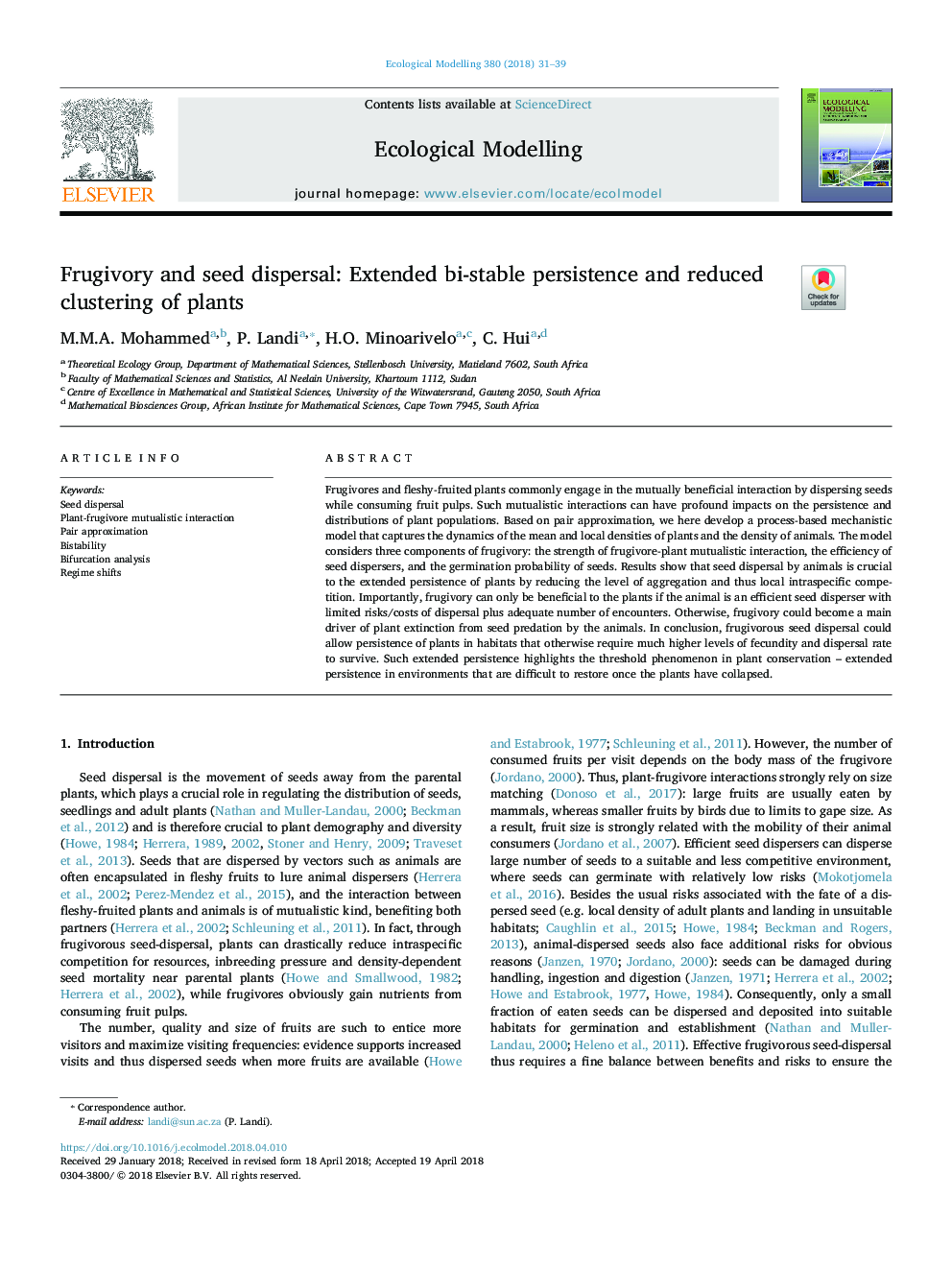| Article ID | Journal | Published Year | Pages | File Type |
|---|---|---|---|---|
| 8846040 | Ecological Modelling | 2018 | 9 Pages |
Abstract
Frugivores and fleshy-fruited plants commonly engage in the mutually beneficial interaction by dispersing seeds while consuming fruit pulps. Such mutualistic interactions can have profound impacts on the persistence and distributions of plant populations. Based on pair approximation, we here develop a process-based mechanistic model that captures the dynamics of the mean and local densities of plants and the density of animals. The model considers three components of frugivory: the strength of frugivore-plant mutualistic interaction, the efficiency of seed dispersers, and the germination probability of seeds. Results show that seed dispersal by animals is crucial to the extended persistence of plants by reducing the level of aggregation and thus local intraspecific competition. Importantly, frugivory can only be beneficial to the plants if the animal is an efficient seed disperser with limited risks/costs of dispersal plus adequate number of encounters. Otherwise, frugivory could become a main driver of plant extinction from seed predation by the animals. In conclusion, frugivorous seed dispersal could allow persistence of plants in habitats that otherwise require much higher levels of fecundity and dispersal rate to survive. Such extended persistence highlights the threshold phenomenon in plant conservation - extended persistence in environments that are difficult to restore once the plants have collapsed.
Related Topics
Life Sciences
Agricultural and Biological Sciences
Ecology, Evolution, Behavior and Systematics
Authors
M.M.A. Mohammed, P. Landi, H.O. Minoarivelo, C. Hui,
